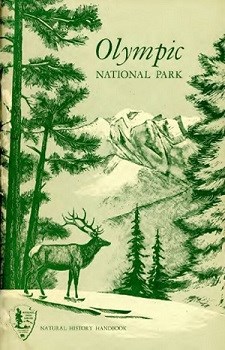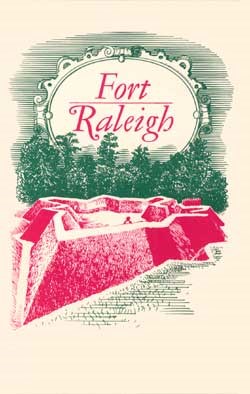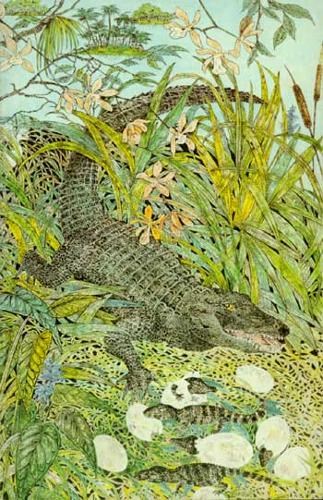
Natural History Handbook #1, Olympic National Park. 1954
The National Park Service (NPS) has a long tradition of publishing handbooks, papers, brochures, and proceedings on a wide range of topics. The classic publications available on this page were originally written to provide more in-depth information about the parks and their resources. They were intended to aid in research and interpretation and to introduce expanded discussions on various concepts and issues. The information they contain was based on the latest scientific and historical research at the time they were published. Photographs, original art, historical pictures and documents, maps, charts, and tables complement many of the publications.
Some of the information contained in these classic publications is dated, however, they're being provided here as historical documents to give people a sense of National Park Service efforts to provide educational, interpretive, and scholastic material to a broader audience.
Go To:

Historical Handbook #16, Fort Raleigh National Historic Site. 1952
Series Descriptions
The classic publications were produced as parts of series. To read a description of a particular series explore the list below.
Archeology Series. A series of archeological and anthropological research studies conducted at national parks. The studies were published starting in the early 1950s and continued into the 1980s.
Annual Reports of the Bureau of American Ethnology. The Smithsonian Institution began publishing the annual reports in the 1870s. Many of the titles covered the discovery of areas that would become national park units.
Anthropological Papers. The publications in this short-lived series focused on an evaluation of the Inter-Agency Archeological Salvage Project and the interpretation of the archeological data from the Missouri River Valley of North and South Dakota. The series was discontinued after its titles were published.
Fauna of the National Parks of the United States. Detailed surveys of wild animal life in national parks. At the urging of park naturalist George M. Wright, National Park Service Director Horace M. Albright ordered a national park wildlife survey in 1933. This was in response to the rapidly growing numbers of visitors to national parks in the years after WWI, loss of park wildlife, and the difficulty of managing wildlife growth. The survey was undertaken by Wright and colleagues with their findings and management best practices published as Fauna series numbers 1 and 2. General and specific surveys in the series were published into the late 1960s.
Field Division of Education. The Field Division of Education and Forestry was established by the National Park Service in 1931 and was headquartered at the University of California at Berkeley. Its primary mission was to hire and train Park Naturalists, however, the office also produced publications which were useful in developing park interpretive programs and museum displays. Many of these publications were prepared by a special research group hired under the Civil Works Program of 1933-34.
Historical Handbooks. After the National Park Service acquired historical areas from the U.S. War Department and the Department of Agriculture in 1933, the Field Division of Education began to conduct more historical research and to publish various historical reports and studies. Many of these would eventually be turned into handbooks for the Historic Handbook series. The series focused on more general history in individual historical park units and was intended to help park staff with interpretation and education. The handbooks also served as park guidebooks for the general public.
History Series. This series was created in 1972 to explore specific topics within the history of several historical parks.
Interpretive Series and Source Books Series. Both of these short series were published between the 1940s and 1950s and focused on very specific histories, narratives, and letters of historical importance.

Natural History Handbook, Everglades Wildguide. 1972. Drawing by Betty Fraser
Natural History Handbooks. A counterpart to the Historical Handbooks, this series explored the natural history of scenic and scientific national park units. The handbooks were intended to help park staff with interpretation and education and to enable visitors to study natural resources within the parks.
Popular Study Series. The series began in 1938 as articles published in the National Park Service's Region One (Eastern) newsletter, The Regional Review. The newsletters contained a collection of historical and scientific research articles written by experts in their fields. The quality of these articles resulted in repeated requests for reprints. The National Park Service reprinted select articles in 1941 as the Popular Study Series. No. 15 in the series was later re-issued as No. 2 in the Interpretive Series.
Scientific Monograph and Occasional Papers. Following the success of the Fauna series, these two series continued the National Park Service tradition of presenting detailed research studies on natural resource topics.
Symposium Series. Conference and symposium transactions and proceedings. The national parks have been holding conferences on various subjects since the first National Park Conference in 1911. Over the years these conferences have covered a wide range of topics including such things as scientific research in the parks, the issues the National Park Service faced as a new federal agency, the development of interpretation, and the impact various modes of transportation had on early park management - particularly the automobile. Most of the publications contain the speeches, reports, and papers presented at each conference.
Tree Preservation Bulletins. In the 1930s the National Park Service was confronted with the problem of improving and maintaining thousands of valuable shade, ornamental, and historically significant trees. In order to guide park service employees in tree maintenance, the Civilian Conservation Corps, under the direction of the National Park Service, published the Tree Preservation Bulletins. The bulletins were originally meant for park service staff however, they were widely use by arborists and landscape specialists. Most of the bulletins were revised and updated in the late 1950s.
Urban Ecology Series. This highly focused series was written in the 1970s by Theodore W. Sudia, Chief Scientist of the National Park Service. The series explores what was, at the time, an emerging field of study - Urban Ecology. The handbooks were more academic in nature and explored humans’ interactions with ecology in an urban/city setting. Studia examined the relationships between humans, nature, and the urban environment through the concept that every city functions as a biological community intertwined with its ecology. In the series he explored how humans and nature interact with each other within these unique human-created environments.
To read one of the classic publications
- Scroll across a listing in the database below and click on the link at the end of the listing.
- You can use the Search bar to look up publication titles, authors, handbooks and series names, or publication years.
- You can also sort on one of the column headings by clicking on the column name.
| Handbook/Series_Name | Publication Number | Publication Title ________________________________________________ | Author(s) ____________________________ | Publication Year | External Link |
|---|
Last updated: August 23, 2023
